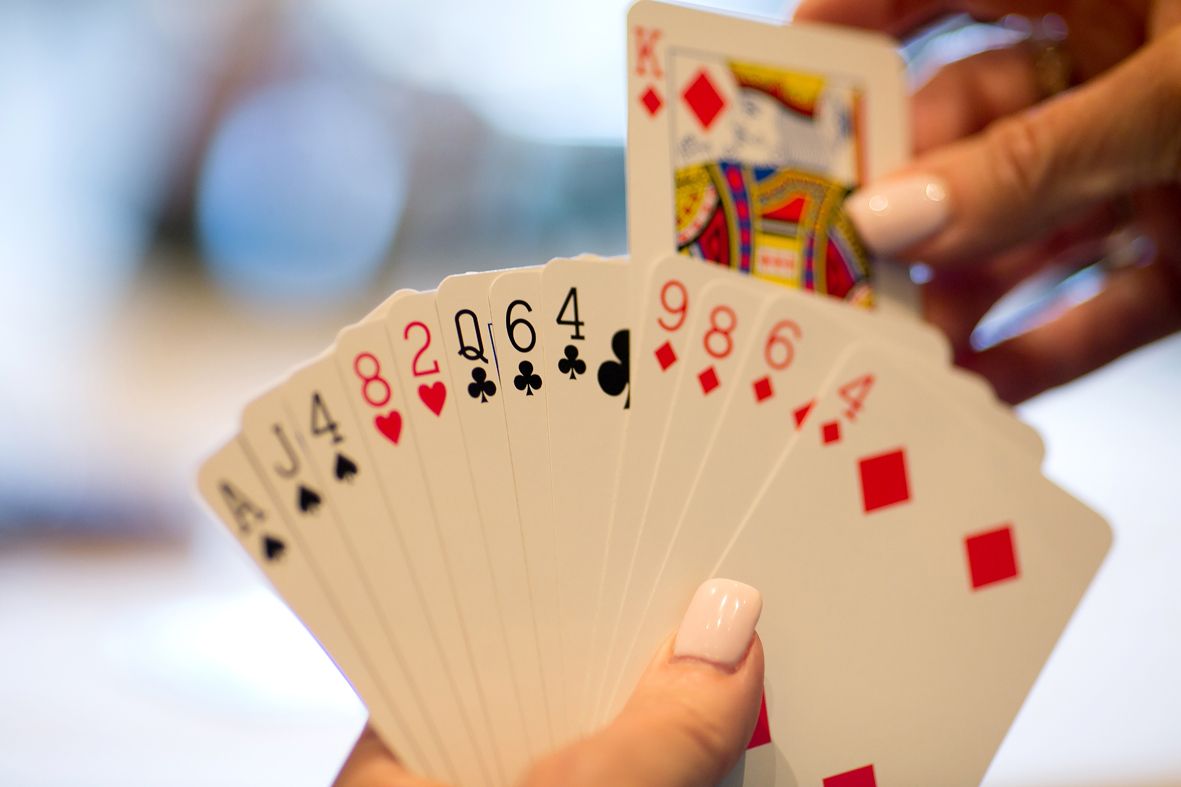In the Cards: Camaraderie draws more players to the game of bridge
A Moysian fit.
The postmortem.
An artificial bid.
Across the card tables of Baton Rouge, the colorful vernacular of duplicate contract bridge is flourishing as more competitors pick up their playing cards to enjoy a game that has been around for generations.
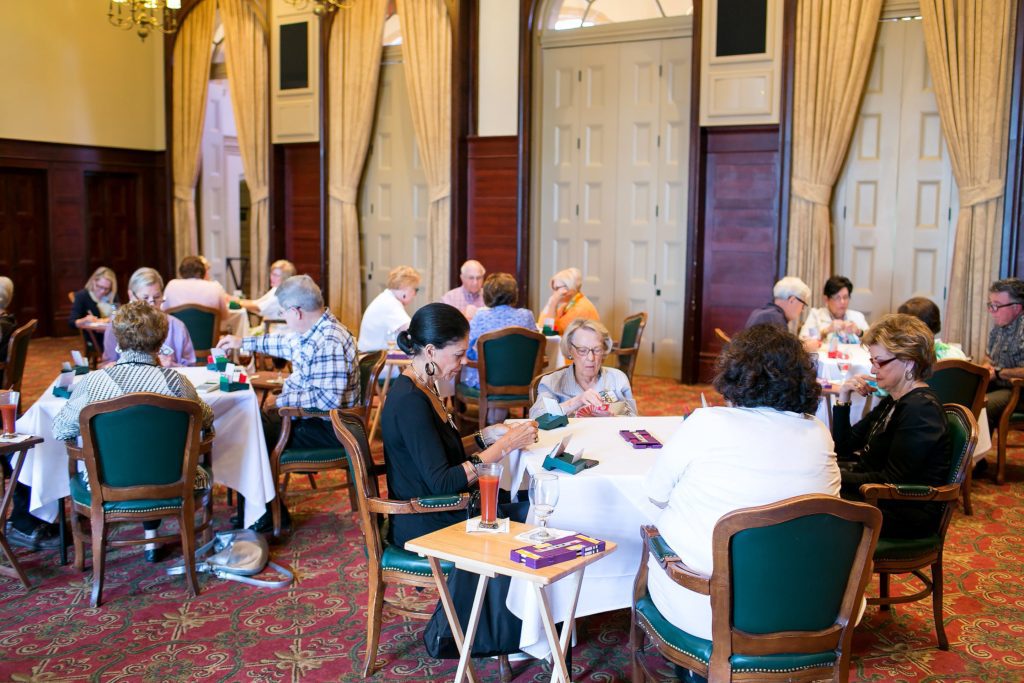 The game, which requires a strong memory, tactical skills and good communication, is popular among senior citizens for its ability to keep the mind sharp and active, says Connie Hester, bridge director at City Club of Baton Rouge.
The game, which requires a strong memory, tactical skills and good communication, is popular among senior citizens for its ability to keep the mind sharp and active, says Connie Hester, bridge director at City Club of Baton Rouge.
“It’s like a whole new language,” says Hester. “The verbiage in the bridge books is unique to bridge.”
This old-school game is flourishing in Baton Rouge.
On the fourth Monday of each month, a second-floor ballroom of City Club fills with serious card players. The club members strive to outplay their opponents and win masterpoints in a morning of card play sanctioned by the American Contract Bridge League. The bridge group, started by Hester and City Club members Jan Parks and Kathy McArthur about four years ago, began with just three tables of four players each. Today, the group has increased to seven tables, says Hester, a certified ACBL bridge instructor.
“People are in love with playing at City Club,” says McArthur, 65, who also serves as vice president of the Baton Rouge Bridge Center. “There are many of us who see friends there we haven’t seen for the whole month.”
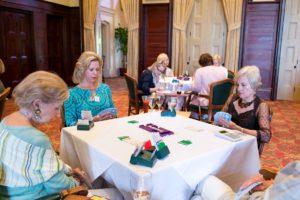
In addition to the social aspect of the game, the mental exercises that bridge demands may stave off memory decline. “It’s one of the best things we can do to help prevent memory loss,” says Hester, “because the entire time you have to pay attention and count and remember every card that’s been played.”
Mark Toney, president of the Baton Rouge Bridge Center, estimates the group annually hosts 4,000 tables of bridge. This nonprofit organization offers duplicate bridge games everyday but Saturday for a nominal fee, and it’s a place where many men and women come to see friends.
“For a lot of members, it’s a very important part of their lives,” Toney says. “It reminds me of that sitcom Cheers where everybody knows your name. It’s just a great place to see people who know you and talk things over. We play a challenging game of bridge. It really makes you think clearly and teaches you humility when your plans don’t work.”
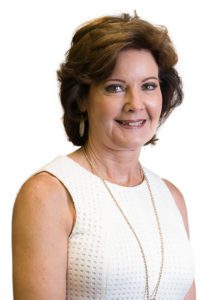
On a regular Tuesday in late May, the bridge center hosted in its main room 18 tables with four players each. In a side room, several tables with beginners or “newcomers,” according to the ACBL vernacular, practiced playing with certified bridge instructors.
“It’s very competitive,” says Jason Holliday, who directs the center’s duplicate bridge games once a week.
Duplicate bridge, with its confusing conventions and customs, can be challenging to learn.
It is so named because the hands are dealt ahead of time with the same board, or four-way cardholder containing the deal, played at each table. Unlike party bridge where players receive different hands each round, scoring in duplicate bridge is based on performance rather than luck.
“We see what each pair can do with the same hands,” Toney says. “Can you do better or will you do worse?”
When all the tables have finished a round, the director will guide movement of the East and West players, partners who face each other across the table. Usually, the East and West players move up a table while the North and South pair remains at the table. The boards are then moved down to a lower numbered table where the players will play that particular deal. A gadget called a Bridgemate, similar in size to an iPhone, calculates scores after the players input information.
Toney says many people called chess the ultimate game of war but that bridge is more representative of the fog of war because in bridge you must draw inferences from what is bid. In a real battle, you would never see the opponent’s hand as you do in chess.
Games at the Bridge Center are indeed serious with minimal socialization and few interruptions.
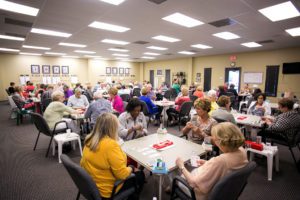
And even though some younger people have indeed shown interest, bridge is still dominated by older generations.
Players are penalized if their cell phones go off during the games, says Holliday, which may deter younger players from playing. The game also requires quite a bit of time and dedication to learn, which many younger adults raising children and working full time simply don’t have.
“The average game is well over the senior citizen age,” says Hester.
Margaret Womack Hart, 74, who has traveled throughout the United States and abroad to play in bridge tournaments, acknowledges the game is dominated by older adults. Hart’s son calls her bridge group “the nursing home group or the blue hairs,” she says. But she maintains that the game is still as popular as ever, despite its silver-haired membership.
“I’ve seen it grow a lot in Baton Rouge and it is because we’ve got some good teachers to introduce you to the game,” Hart says.

Mary Morton, 61, began taking bridge lessons about eight years ago when her fellow tennis players began injuring themselves at an alarming pace. She realized her own good fortune would not last forever and searched for a game she could play with friends at an older age. Once she started taking bridge lessons, she “became addicted.”
Her dedication paid off when she earned the title of Life Master, a high-ranking achievement offered by the ACBL, at the Baton Rouge Bridge Center in February. Only as many as five players at the bridge center are awarded the title per year by achieving 300 masterpoints. The collection of masterpoints is a difficult and time-consuming task with players sometimes only earning percentages of masterpoints each game.
“It’s a constant learning experience,” says Morton. “And really, when you think you’ve learned something, I’m telling you, there’s 20,000 things you haven’t learned.”
Hart is a Sapphire Life Master, which means she has more than 3,500 masterpoints. Hester is a Bronze Life Master, and McArthur has earned 275 masterpoints. In mid-May, Hart traveled to Jackson, Mississippi, to play in a bridge tournament and was thrilled to be playing alongside world champions.
“I don’t know any other sport where you can do that!” she says.
Hart continues to play to challenge her mind and maximize her potential.
“I’ll never be a world champion and I don’t aspire to that,” she says. “I just want to play the best bridge I can for my own potential.”




